Japan's thin, white security blanket L.A. Times. Excerpts:
Leaning against a wall in the busy Akihabara electronics district here, Tomomitsu Funayama was enjoying a do-nothing day off from his architectural job. Yet he looked less like a slacker than a surgeon late for a big operation.
For years, the 26-year-old Tokyo native had resisted the urge to follow the millions in this city who don face masks during the "wheeze and sneeze" hay fever and flu seasons to protect against allergens and help stop the spread of germs.
This year, Funayama joined the pack. But it wasn't pollen that concerned him; it was radioactive isotopes.
"I'm worried about the air in Tokyo," he said. "The radioactivity is all around us. Who knows what we're breathing in?"
Japan earthquake: Dealing with mountains of debris BBC News Asia Pacific. Excerpts:
According to the environment ministry there are 20 million tons of debris, although some estimates have put the figure higher. In Miyagi prefecture about 146,000 vehicles have been damaged or destroyed - one in 10 of the total.
..
The aim is to remove all the waste that is getting in the way of daily life by August - clearing roads and so forth - but huge amounts are left on private property too.
In Ishinomaki, diggers have been used to begin to gather the wreckage into huge piles.
The centre of the city is now dominated by a gigantic stinking mound of splintered wood, clothes and metal, the same height as a three or four-storey building and several hundred metres long.
..
Dealing with the wreckage left behind by the disaster is likely to take a very long time - Japan's government is yet to estimate how long.
Japan reactor leak 'serious setback' Al Jazeera. Excerpts:
One of the reactors at Japan's crippled nuclear power plant has been damaged more severely than originally thought, officials said, a serious setback for efforts to stabilise the radiation-leaking complex.
The data released on Thursday also showed that the water level in the core of Unit 1 at the Fukushima Daiichi plant is much lower than previously thought, leaving the portion of the fuel rods still intact fully exposed.
Other fuel has slumped to the bottom of the pressure vessel and is thought to be covered in water.
The findings also indicate a greater-than-expected leak in that vessel. Radioactive water pouring from troubled reactors has flooded around the complex, hindering work to bring the plant under control.
Key facilities in Fukushima plant could have collapsed before tsunami: report Xinhuanet. Excerpts:
Key facilities at the Fukushima No. 1 nuclear power may have been damaged by the quake itself that day rather than tsunami-caused power loss that failed the reactor's cooling function, Kyodo News quoted a utility source said Saturday.
Data taken by workers entering the No. 1 reactor building at the crippled plant on the night of March 11 showing the radiation level was as high as 300 millisieverts per hour suggest a large amount of radioactive materials from nuclear fuel in the reactor was already released.
..
The findings may call for a review of preparedness against quakes at various nuclear power stations in Japan as they have primarily focused on securing auxiliary power supplies and embankment enhancement against tsunami after the Fukushima plant crisis, assuming that reactor facilities at the plant were unscathed by trembling.
..
It has been thought that power loss failed the cooling system at the No. 1 reactor, releasing highly radioactive steam from the reactor pressure vessel.
Kyodo said a source at TEPCO admitted the possibility of key facilities having been compromised before the tsunami waves, saying, "The quake's trembling may have caused damage to the pressure vessel or pipes."
Japan govt body detailed tsunami risks before March 11:documents Reuters. Excerpts:
A government body conducted analyses on the damage tsunamis of various scale would inflict on a nuclear power plant, according to documents made public on Sunday, adding to allegations that Japan and its largest utility failed to heed warnings.
The latest revelation, reported by the Mainichi daily, emerged as the government prepares to help Tokyo Electric Power (TEPCO) compensate victims of the crisis at the tsunami-crippled nuclear Fukushma Daiichi plant.
..
"Our analysis shows that a tsunami of a certain height (some 7 meters in the absence of a seawall and some 15 meters if one were present) or higher would have almost a 100 percent chance of damaging the reactor core...," the Japan Nuclear Energy Safety Organization said in the report.
"We presume a tsunami of at least 7 meters would destroy the functions of a seawater pump and that of at least 15 meters would destroy outside equipment such as an electrical transformer."
#Fukushima I Nuke Plant Reactor 1 Bldg: 2,000 Millisieverts/Hr at Southeast Double Door, 3,000 Tons of Water in the Basement Ex-SKF via Rense. Excerpts:
From Yomiuri Shinbun and Asahi Shinbun, on 5/15/2011 (in Japanese):
Well, it was all farce, then; that TEPCO installed the air filtering system and claimed that the radioactive materials inside the Reactor 1 reactor building got safe enough (they were saying a few millisieverts to 10s of millisieverts/hour) for the workers to go in and start working.
Unless the "new normal" for Fukushima I Nuke Plant is to count the radiation in sieverts.
The so-called "water entombment" is officially dead now. TEPCO has poured over 10,000 tons of water inside the RPV. Now they say they've found 3,000 tons of it. Where's the rest, 7,000 tons?
Not only is there no good news, the situation continues to deteriorate...
Leaning against a wall in the busy Akihabara electronics district here, Tomomitsu Funayama was enjoying a do-nothing day off from his architectural job. Yet he looked less like a slacker than a surgeon late for a big operation.
For years, the 26-year-old Tokyo native had resisted the urge to follow the millions in this city who don face masks during the "wheeze and sneeze" hay fever and flu seasons to protect against allergens and help stop the spread of germs.
This year, Funayama joined the pack. But it wasn't pollen that concerned him; it was radioactive isotopes.
"I'm worried about the air in Tokyo," he said. "The radioactivity is all around us. Who knows what we're breathing in?"
Japan earthquake: Dealing with mountains of debris BBC News Asia Pacific. Excerpts:
According to the environment ministry there are 20 million tons of debris, although some estimates have put the figure higher. In Miyagi prefecture about 146,000 vehicles have been damaged or destroyed - one in 10 of the total.
..
The aim is to remove all the waste that is getting in the way of daily life by August - clearing roads and so forth - but huge amounts are left on private property too.
In Ishinomaki, diggers have been used to begin to gather the wreckage into huge piles.
The centre of the city is now dominated by a gigantic stinking mound of splintered wood, clothes and metal, the same height as a three or four-storey building and several hundred metres long.
..
Dealing with the wreckage left behind by the disaster is likely to take a very long time - Japan's government is yet to estimate how long.
Japan reactor leak 'serious setback' Al Jazeera. Excerpts:
One of the reactors at Japan's crippled nuclear power plant has been damaged more severely than originally thought, officials said, a serious setback for efforts to stabilise the radiation-leaking complex.
The data released on Thursday also showed that the water level in the core of Unit 1 at the Fukushima Daiichi plant is much lower than previously thought, leaving the portion of the fuel rods still intact fully exposed.
Other fuel has slumped to the bottom of the pressure vessel and is thought to be covered in water.
The findings also indicate a greater-than-expected leak in that vessel. Radioactive water pouring from troubled reactors has flooded around the complex, hindering work to bring the plant under control.
Key facilities in Fukushima plant could have collapsed before tsunami: report Xinhuanet. Excerpts:
Key facilities at the Fukushima No. 1 nuclear power may have been damaged by the quake itself that day rather than tsunami-caused power loss that failed the reactor's cooling function, Kyodo News quoted a utility source said Saturday.
Data taken by workers entering the No. 1 reactor building at the crippled plant on the night of March 11 showing the radiation level was as high as 300 millisieverts per hour suggest a large amount of radioactive materials from nuclear fuel in the reactor was already released.
..
The findings may call for a review of preparedness against quakes at various nuclear power stations in Japan as they have primarily focused on securing auxiliary power supplies and embankment enhancement against tsunami after the Fukushima plant crisis, assuming that reactor facilities at the plant were unscathed by trembling.
..
It has been thought that power loss failed the cooling system at the No. 1 reactor, releasing highly radioactive steam from the reactor pressure vessel.
Kyodo said a source at TEPCO admitted the possibility of key facilities having been compromised before the tsunami waves, saying, "The quake's trembling may have caused damage to the pressure vessel or pipes."
Japan govt body detailed tsunami risks before March 11:documents Reuters. Excerpts:
A government body conducted analyses on the damage tsunamis of various scale would inflict on a nuclear power plant, according to documents made public on Sunday, adding to allegations that Japan and its largest utility failed to heed warnings.
The latest revelation, reported by the Mainichi daily, emerged as the government prepares to help Tokyo Electric Power (TEPCO) compensate victims of the crisis at the tsunami-crippled nuclear Fukushma Daiichi plant.
..
"Our analysis shows that a tsunami of a certain height (some 7 meters in the absence of a seawall and some 15 meters if one were present) or higher would have almost a 100 percent chance of damaging the reactor core...," the Japan Nuclear Energy Safety Organization said in the report.
"We presume a tsunami of at least 7 meters would destroy the functions of a seawater pump and that of at least 15 meters would destroy outside equipment such as an electrical transformer."
#Fukushima I Nuke Plant Reactor 1 Bldg: 2,000 Millisieverts/Hr at Southeast Double Door, 3,000 Tons of Water in the Basement Ex-SKF via Rense. Excerpts:
From Yomiuri Shinbun and Asahi Shinbun, on 5/15/2011 (in Japanese):
2,000 millisieverts, or 2 sieverts, per hour radiation was detected inside the southeast double door of the Reactor 1 reactor building. Measurement was done by a remote-controlled robot on May 13. The location is where the pipe is that goes into the Reactor Pressure Vessel (RPV).
Well, it was all farce, then; that TEPCO installed the air filtering system and claimed that the radioactive materials inside the Reactor 1 reactor building got safe enough (they were saying a few millisieverts to 10s of millisieverts/hour) for the workers to go in and start working.
Unless the "new normal" for Fukushima I Nuke Plant is to count the radiation in sieverts.
The so-called "water entombment" is officially dead now. TEPCO has poured over 10,000 tons of water inside the RPV. Now they say they've found 3,000 tons of it. Where's the rest, 7,000 tons?
Not only is there no good news, the situation continues to deteriorate...










































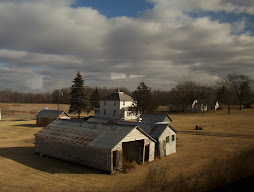


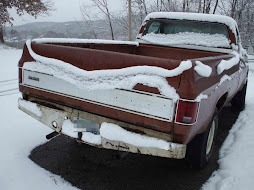

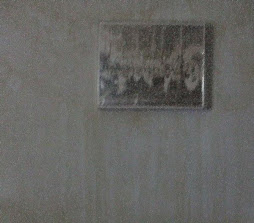






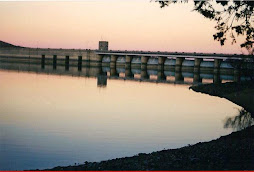







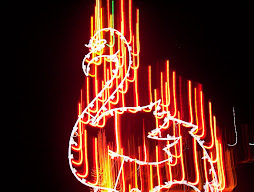




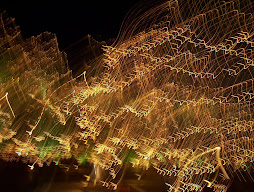













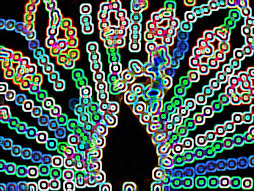









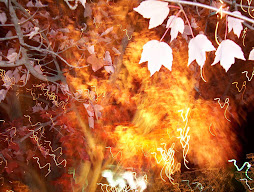













No comments:
Post a Comment